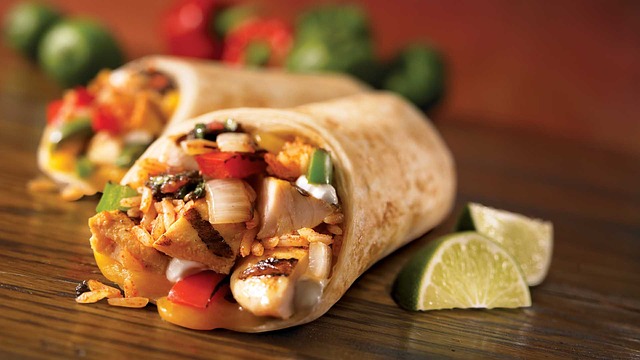Chipotle, the fast-casual restaurant chain specializing in Mexican food, has launched a new loyalty program called Chipotle Rewards. The company is currently beta testing the program in three markets: Phoenix, AZ; Kansas City, MO/KS; and Columbus, OH, and plans to roll out nationwide in 2019. For this week’s blog, I thought it would be fun to do a professional review of the new program using the five criteria for assessing loyalty program value I wrote about previously.
First, a few details about Chipotle Rewards. The program is free to join. Members earn 10 points per $1 spent at its restaurants or through catering orders, and 15 points per $1 for orders placed via its website or mobile app. There will be bonus actions consumers can complete to earn additional points. Once a member accumulates 1250 points, those points can be redeemed for a free regular-priced entrée item. Rewards expire after 60 days. Till Nov. 21, 2018, the program is offering a joining incentive of a free order of Chips & Guac after the new member makes the first purchase under the program. Let’s take a look at how this design stacks up against the five value criteria.
Criterion #1: Cash Value
In my geographic area, a typical entrée on the Chipotle menu costs about $7~$8. Together with the point earning ratio of 10 points per $1 and a reward threshold of 1250 points, we can calculate the reward ratio to be ($7~$8/1250)*10 = $0.056~$0.064 per dollar spent (or 5.6%~6.4%). This reward ratio is pretty high compared with a typical credit card reward program, but how does it compare with other restaurant loyalty programs? Chipotle’s direct competitor, QDOBA, also runs a loyalty program called QDOBA Rewards. The program requires 3000 points for a free entrée priced at the $8 range, with lower thresholds for cheaper items. The earning ratio for QDOBA Rewards is the same 10 points per $1 at the two lower tiers (Recruit and Apprentice), and goes up to 15 points per $1 for the Pro tier and 20 points per $1 for the highest Champ tier. Putting these numbers together, it appears QDOBA Rewards has a base reward ratio of about 2.67% for the two lower tiers, and 4% and 5.33% for the two higher tiers. Comparatively speaking, Chipotle Rewards offers a higher cash value. However, considering the bonus points per visit offered to higher-tier members of QDOBA Rewards, the two programs are more comparable in cash value at the higher tiers.
Criterion #2: Aspirational Value
Aspirational value refers to non-financial values that may also motivate consumers, such as premium VIP status or pampering rewards. Chipotle Rewards offers a flat structure without premium tiers. Its reward is also restricted to free entrées. So I would say the program is focused more on cash value than on aspirational value, although some may say food as rewards may provide some value of pleasure beyond nickels and dimes, especially to consumers who love the cuisine. In comparison, QDOBA Rewards provides a higher level of aspirational value with its tiered structure and perks offered to the premium members. On this criterion, QDOBA Rewards wins.
Criterion #3: Relevance
A 2015 Study by Citi Research reports average per person spending at Chipotle to be about $11. Considering inflation over the last three years, that number should be closer to $12 now. This means that for an average member, it will take just over 10 meals to reach the 1250-point reward threshold. If the consumer is particularly good at ordering online or mobile, he or she can get to the free entrée in 7 meals. The most recent numbers I could find on customer visit frequency to Chipotle were from 2015, at which time 55% of their customers came a few times a year, and 43% of their customers came once a month or more. Since 2015, there has been further reports of declining sales at Chipotle due to food safety concerns and competition. So dining frequency may be lower now than it was three years ago. Unless a member visits Chipotle once a month or more, he or she has to wait nearly a whole year to get a free entrée. This is a bit of a long wait for a frequently consumed category. Although the higher point ratio for online and mobile orders reduces that wait, one can assume that infrequent customers are less likely to go through the trouble of downloading its mobile app. So Chipotle Rewards is most likely to appeal more to the 40% or so of their customers that visit more frequently. In comparison, the QDOBA program offers smaller rewards at a lower threshold (e.g., 300 points for a $1 chocolate chip cookie), which could make the program more relevant to the less frequent customers.

Criterion #4: Choice of Redemption Options
Redemption options for Chipotle Rewards are limited to all its regularly priced entrée items. While the reward choices are not nearly as extensive as, say, American Express Membership Rewards or a frequent flyer program, it is somewhat expected for a restaurant loyalty program. QDOBA Rewards are very similar this way, but offers more varieties with the lower-priced items on the menu at fewer points. Overall, the choice of redemption options is relatively limited for both programs, and they likely appeal to true believers of the cuisine.
Criterion #5: Convenience
Consumers can sign up for a Chipotle Rewards membership online or via its mobile app. It is not clear if the company will eventually offer a more convenient in-store sign-up option. To earn points in the program, its Terms and Conditions of Participation state that “you must present your digital Chipotle Rewards account (i) at the point-of-sale at a participating U.S. Chipotle restaurant at the time of payment for a qualifying purchase transaction, or (ii) provided you are logged in to your account, at the time you place an order for a qualifying purchase (including a qualifying catering order) at order.chipotle.com or via the Chipotle mobile ordering app.” This is fairly standard practice, but as far as I can find, there is no option to use a physical reward card for the less tech-savvy customers (an option offered by QDOBA Rewards). The lack of a physical card reduces cost of the program and at the same time also restricts the program appeal to customers with better technology access. This could prove inconvenient to some consumers. In the meantime, rewards are automatically loaded to the members’ accounts once the point threshold is reached. This is pretty convenient and can encourage higher engagement through reward redemption.
Summary
Taken together, Chipotle’s new loyalty program offers a pretty standard restaurant loyalty program. It is fairly on par with its direct competitor QDOBA’s offering, with some advantages on cash value and redemption convenience but disadvantages on relevance, redemption choice, and aspirational value. Compared with QDOBA Rewards, Chipotle’s new program seems to target a more frequent customer group, similar to its previous effort at a short-term loyalty program, Chiptopia, in 2016. The company is reported to have a highly personalized CRM program to drive targeted communication and promotions through the program. Done right, such program-based analytics can indeed help the bottom line and enhance customer loyalty. At the same time, Chipotle has experienced multiple food safety incidences in the last few years, which has put a significant dent in its business. I don’t believe a reward program will solve the problem on that front. To gain customer trust and loyalty again, Chipotle will need simultaneous improvements in its operations and customer experience to truly create a long-lasting impact.
